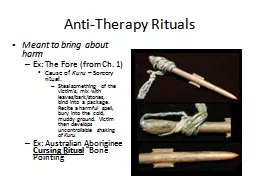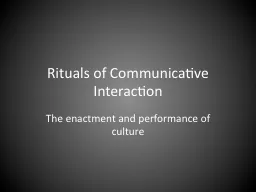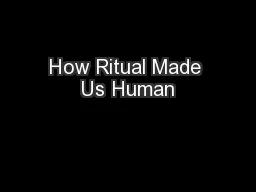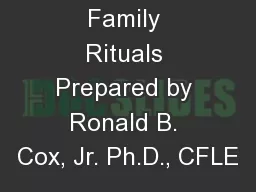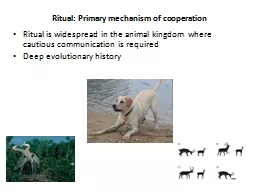PPT-Anti-Therapy Rituals
Author : pasty-toler | Published Date : 2016-05-08
Meant to bring about harm Ex The Fore from Ch 1 Cause of Kuru Sorcery ritual Steal something of the victim s mix with leavesbarkstones bind into a package Recite
Presentation Embed Code
Download Presentation
Download Presentation The PPT/PDF document "Anti-Therapy Rituals" is the property of its rightful owner. Permission is granted to download and print the materials on this website for personal, non-commercial use only, and to display it on your personal computer provided you do not modify the materials and that you retain all copyright notices contained in the materials. By downloading content from our website, you accept the terms of this agreement.
Anti-Therapy Rituals: Transcript
Download Rules Of Document
"Anti-Therapy Rituals"The content belongs to its owner. You may download and print it for personal use, without modification, and keep all copyright notices. By downloading, you agree to these terms.
Related Documents

